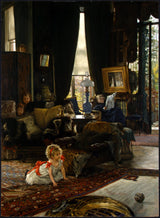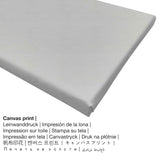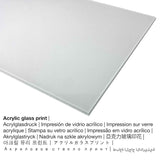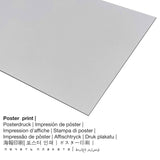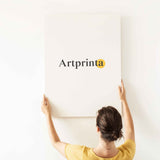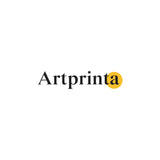James Tissot, 1877 - Zoo na Chọọ - mbipụta nka mara mma
Ụtụ gụnyere. Mbupu gbakọrọ na ndenye ọpụpụ.
Ozi gbasara oyiri nka Ozuzo na ọchụchọ
In 1877 na nwoke artist James Tissot painted this 19th century piece of art. The beyond 140 year-old original had the following size: 73,4 x 53,9 cm (28 7/8 x 21 1/4 in). Mmanụ na osisi was used by the artist as the technique for the work of art. It can be viewed in in the National Gallery of Art's art collection. With courtesy of: National Gallery of Art, Washington (public domain).Also, the artpiece has the following creditline: . Further, the alignment is portrait and has a side ratio of 3: 4, meaning that the length is 25% shorter than the width. James Tissot was a male painter, caricaturist from France, whose art style can be attributed mainly to Realism. The artist was born in 1836 na nwụrụ anwụ na afọ nke 66 na 1902.
Supplemental information by National Gallery of Art (© Copyright - National Gallery of Art - Nnukwu osisi nke Art)
Chester Dale Fund
In early 1874 Degas wrote, "Look here, my dear Tissot. . . you positively must exhibit at the Boulevard [in the first impressionist exhibition]. . . Exhibit. Be of your country and with your friends." Degas and Tissot, who met as students during the late 1850s, stayed in close communication even after Tissot fled to London in 1871 to avoid punishment for activities in the abortive Commune. Arguing that the benefits of declaring his allegiance to French art outweighed the potential harm it might cause among Tissot's London audience, Degas urged Tissot to show with the impressionists and thereby affirm his ties to France and more particularly to Degas and realism.
Although he chose not to accept the invitation, Tissot, like Degas, worked in a realist vein. Hide and Seek depicts a modern, opulently cluttered Victorian room, Tissot's studio. After Kathleen Newton entered his home in about 1876, Tissot focused almost exclusively on intimate, anecdotal descriptions of the activities of the secluded suburban household, depicting an idyllic world tinged by a melancholy awareness of the illness that would lead to her death in 1882. The artist's companion reads in a corner as her nieces and daughter amuse themselves. The artist injected an atmosphere of unease into this tranquil scene by comparing the three lively faces peering toward the infant in the foreground at the left with an ashen Japanese mask hanging near Mrs. Newton in the entry to the conservatory.
Nkọwa gbasara ọrụ nka
| Aha nka nka: | "Hide and Seek" |
| Nhazi: | sere |
| Otu izugbe: | nkà nke oge a |
| Narị afọ nka: | 19th narị afọ |
| Emepụtara na: | 1877 |
| Ogologo afọ nka nka: | karịa afọ 140 |
| Usoro izizi: | mmanụ n'elu osisi |
| Akụkụ izizi nka: | 73,4 x 53,9 cm (28 7/8 x 21 1/4 na) |
| Ụlọ ihe ngosi nka / mkpokọta: | Nnukwu osisi nke Art |
| Ebe ngosi nka: | Washington DC, Njikota Obodo Amerika |
| Weebụsaịtị ihe ngosi nka: | Nnukwu osisi nke Art |
| Licensedị ikike: | ngalaba ọha |
| Site n'aka: | National Gallery of Art, Washington |
Tebụl nyocha nke onye na-ese ihe
| Aha onye nka: | James Tissot |
| Aha ndị ọzọ: | James Jacques Joseph Tissot, ja.s tissot, Tissot James Jacques Joseph, James Tissot, Tissot Jacques-Joseph, Tissot J. James, j.j. tissot, טיסו ג'יימס, J. Tissot, Tissot, Tissot James Joseph Jacques, Tissot James-Jacques-Joseph, James Joseph Jacques Tissot, Tissot James, Tissot J. J., Tissot Jacques Joseph, j. j. tissot, joseph jacques tissot, tissot joseph jacques, jacques joseph tissot, Tissot James Jacques |
| okike nke onye nka: | nwoke |
| Obodo onye nka: | French |
| Ọrụ: | caricaturist, onye na-ese ihe |
| Obodo onye nka: | France |
| Nhazi nke onye nka: | omenkà nke oge a |
| Ụdị nka: | Ihe ngosi |
| Afọ ọnwụ: | 66 afọ |
| Afọ ọmụmụ: | 1836 |
| Nwụrụ n'afọ: | 1902 |
Họrọ ngwa ngwaahịa ọkacha mmasị gị
Nchịkọta nhọrọ ngwaahịa na-enye gị ohere ịhọrọ ihe na nha ọkacha mmasị gị. Anyị na-ahapụ gị ka ịhọrọ n'ime ụdị ndị a:
- Mbipụta iko acrylic (nke nwere ezigbo mkpuchi iko n'elu): The acrylic glass print, often referenced as a print on plexiglass, transforms your favorite original work of art into beautiful home decoration. The work of art will be made with the help of state-of-the-art UV direct print machines. The image effect of this are vivid and impressive colors.
- Kwaaji: The canvas direct print is a printed cotton canvas stretched on a wooden frame. A printed canvas of this artpiece will provide you with the chance of turning your individual fine art print into a large size collection piece as you know from galleries. The great advantage of canvas prints is that they are relatively low in weight, which implies that it is quite simple to hang up your Canvas print without extra wall-mounts. A canvas print is suitable for all types of walls.
- Ebipụta akwụkwọ mmado na ihe akwa akwa: Our poster is a printed canvas with a slightly roughened texture on the surface. The poster is optimally appropriate for putting the fine art print with a special frame. Please keep in mind, that depending on the absolute size of the poster print we add a white margin of around 2-6cm around the print, which facilitates the framing.
- Aluminom dibond mbipụta (ọla): An Aluminium Dibond print is a print material with a true depth. A direct Aluminium Dibond Print is your excellent start to art reproductions with aluminum. The bright and white parts of the work of art shimmer with a silk gloss but without glow. This direct print on Aluminum Dibond is the most popular entry-level product and is an extremely sophisticated way to display fine art prints, because it draws attention on the whole artwork.
Ozi ndabere edemede
| Ụdị edemede: | ọrụ mgbidi |
| Usoro mmeghari: | dijitalụ mmeputakwa |
| Produzọ mmepụta: | Mbipụta UV ozugbo (mbipụta dijitalụ) |
| Mmalite ngwaahịa: | German mere |
| Ụdị ngwaahịa: | mmepụta ihe na-achọ |
| Eji ngwaahịa emebere: | foto mgbidi, ihe ndozi ụlọ |
| Nhazi nka nka: | nhazi ihe osise |
| Njikwa oyiyi: | 3: 4 - ogologo: obosara |
| Nkọwa nha onyonyo: | ogologo bụ 25% mkpụmkpụ karịa obosara |
| Nhọrọ akụrụngwa: | mbipụta ọla (aluminium dibond), mbipụta akwụkwọ mmado (akwụkwọ kwaaji), mbipụta kanvas, mbipụta iko acrylic (nwere ezigbo mkpuchi iko) |
| Canvas dị n'elu ihe nrịbama (mbipụta kanvas) nha dị iche iche: | 30x40cm - 12x16", 60x80cm - 24x31", 90x120cm - 35x47", 120x160cm - 47x63" |
| Mbipụta iko acrylic (nke nwere ezigbo mkpuchi iko): | 30x40cm - 12x16", 60x80cm - 24x31", 90x120cm - 35x47", 120x160cm - 47x63" |
| Nhọrọ nha nke akwụkwọ mmado (akwụkwọ kwaaji): | 30x40cm - 12x16", 60x80cm - 24x31", 90x120cm - 35x47" |
| Nhọrọ Dibond (ihe alumnium) nhọrọ: | 30x40cm - 12x16", 60x80cm - 24x31", 90x120cm - 35x47" |
| Nhazi mbipụta nka: | agunyeghi |
Ihe dị mkpa: We try everything in order to depict our art products as precisely as possible and to demonstrate them visually on the various product detail pages. Still, the pigments of the print products and the imprint can vary marginally from the representation on your device's monitor. Depending on your settings of your screen and the condition of the surface, colors might not be printed as realisitcally as the digital version on this website. Since all the are printed and processed by hand, there may as well be slight discrepancies in the size and exact position of the motif.
© Nchekwa ikike nwebisiinka, Artprinta.com

